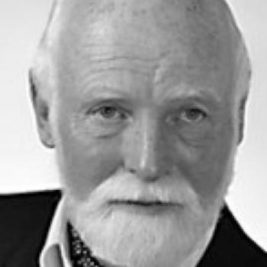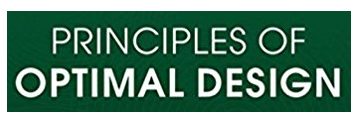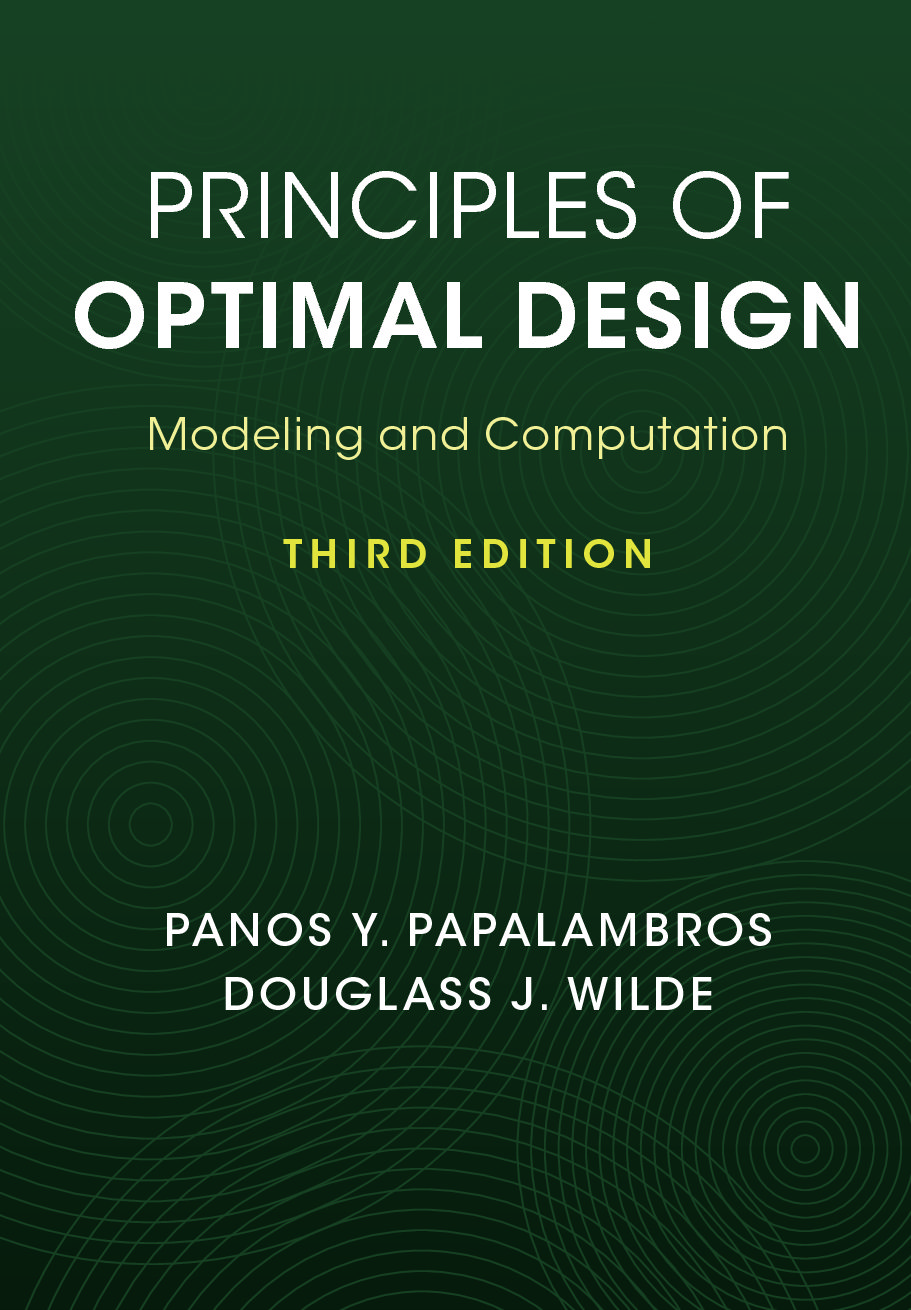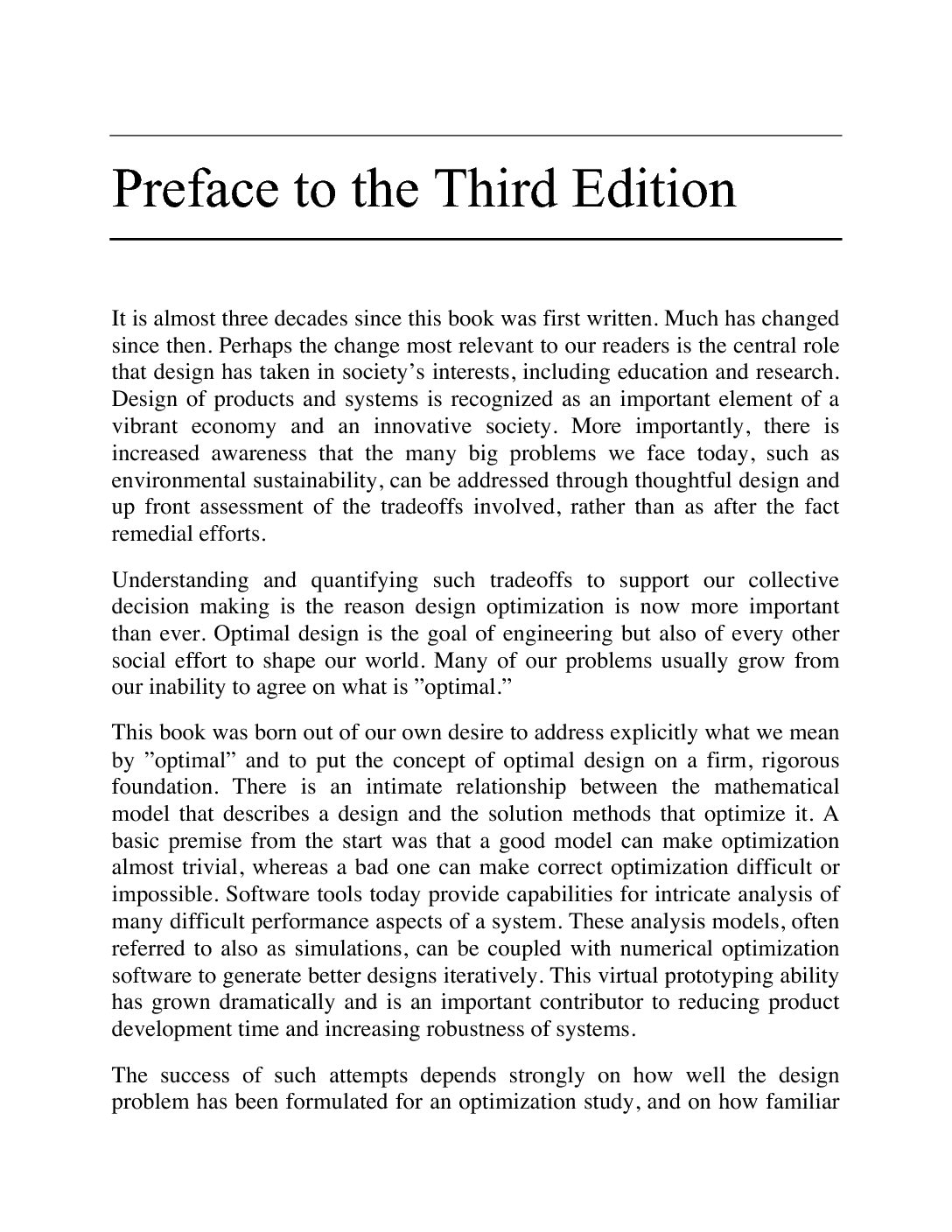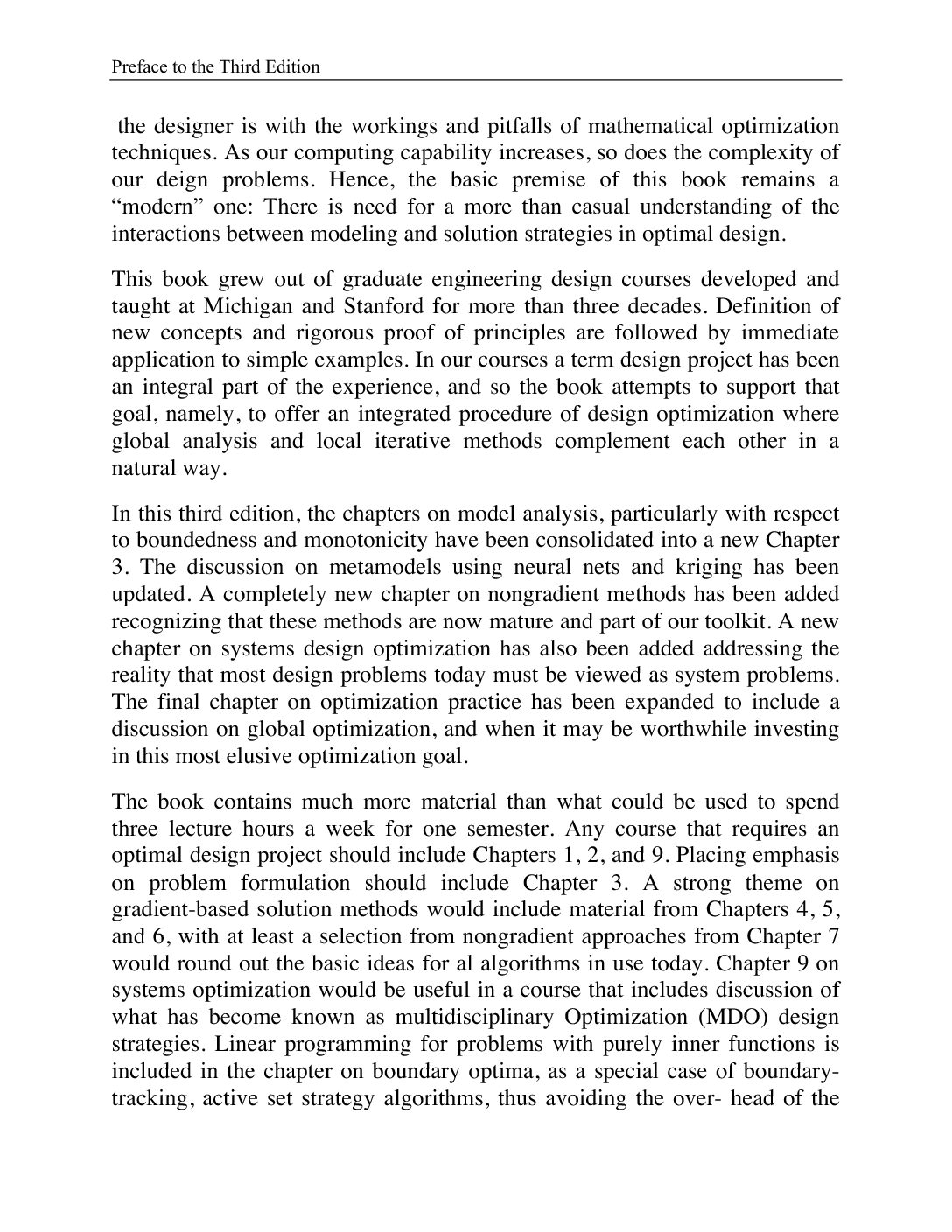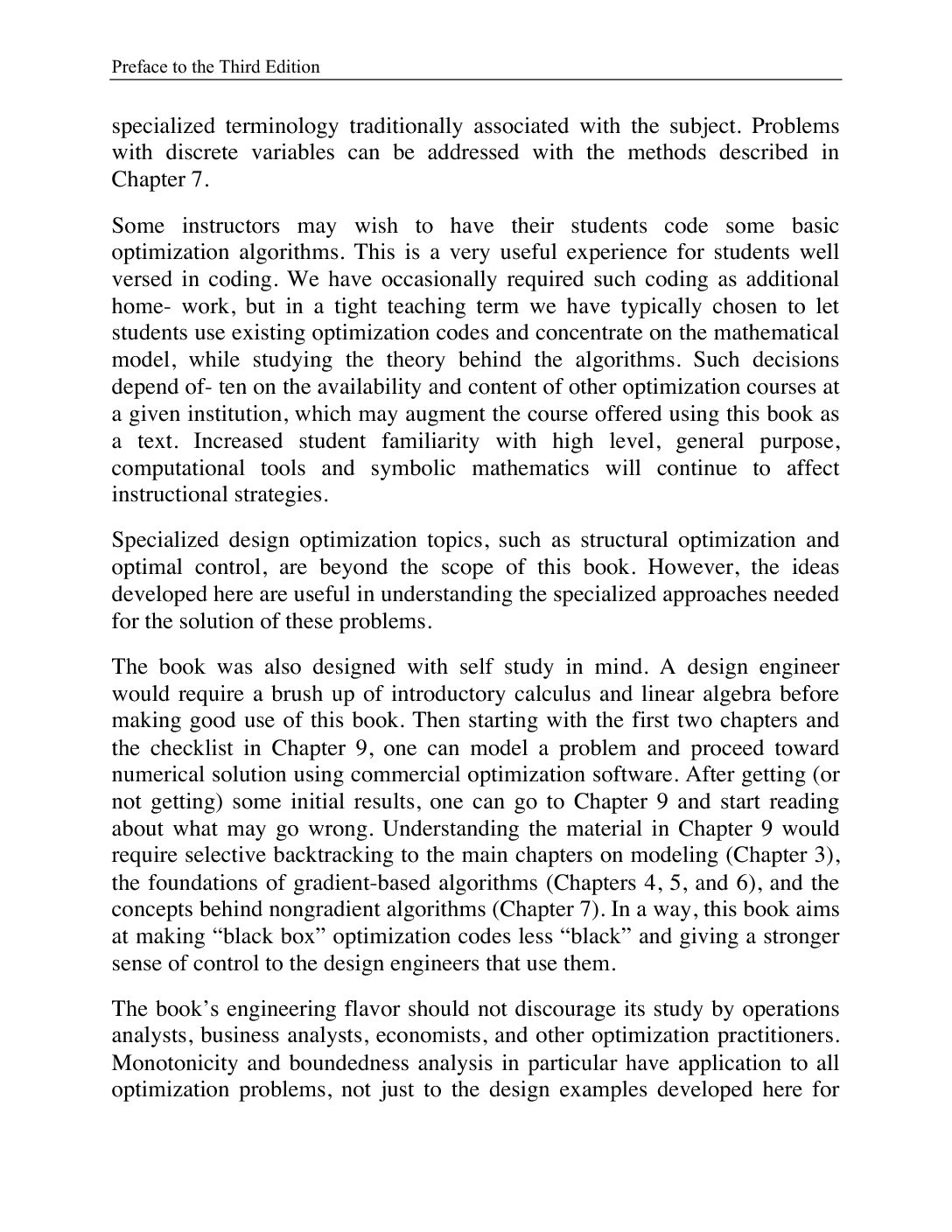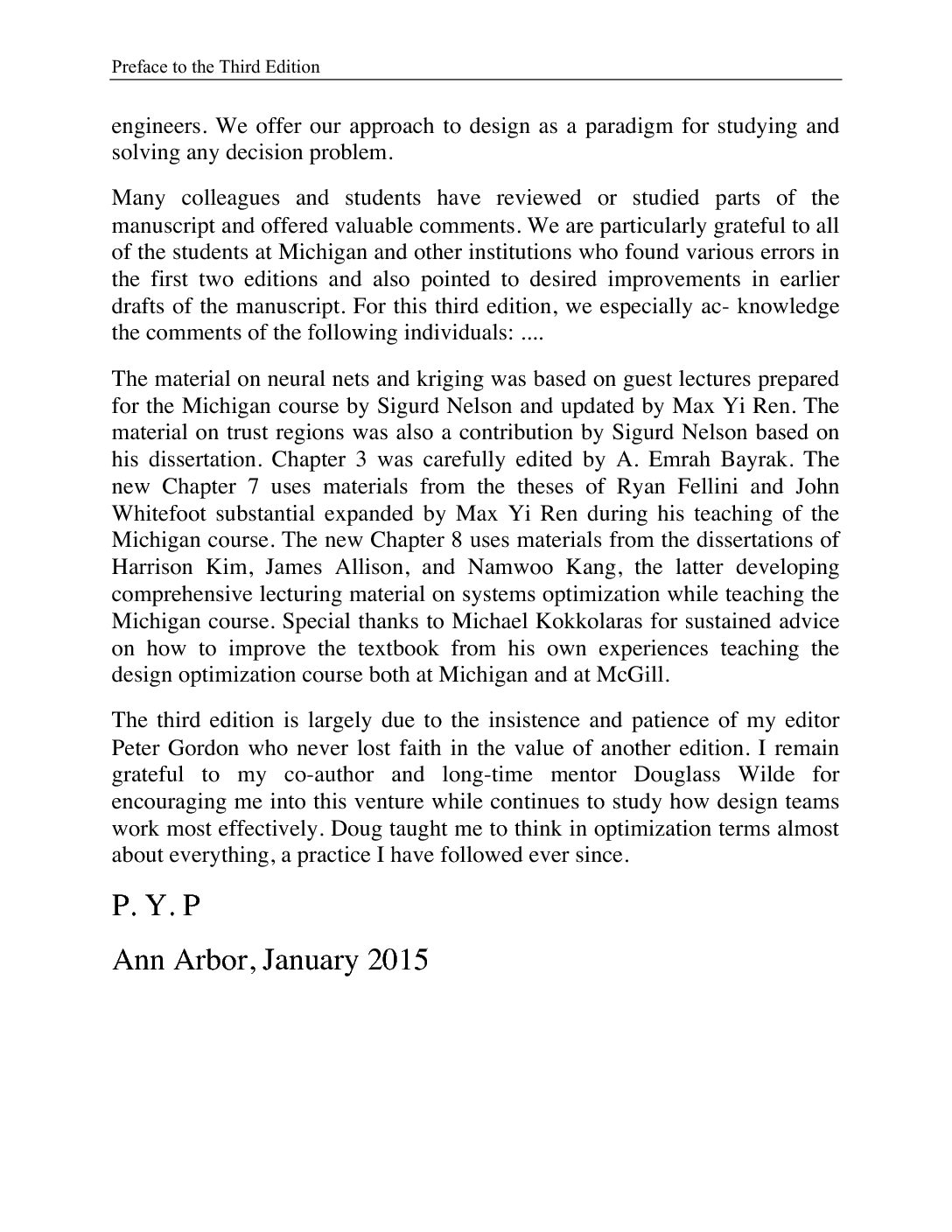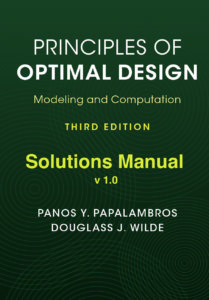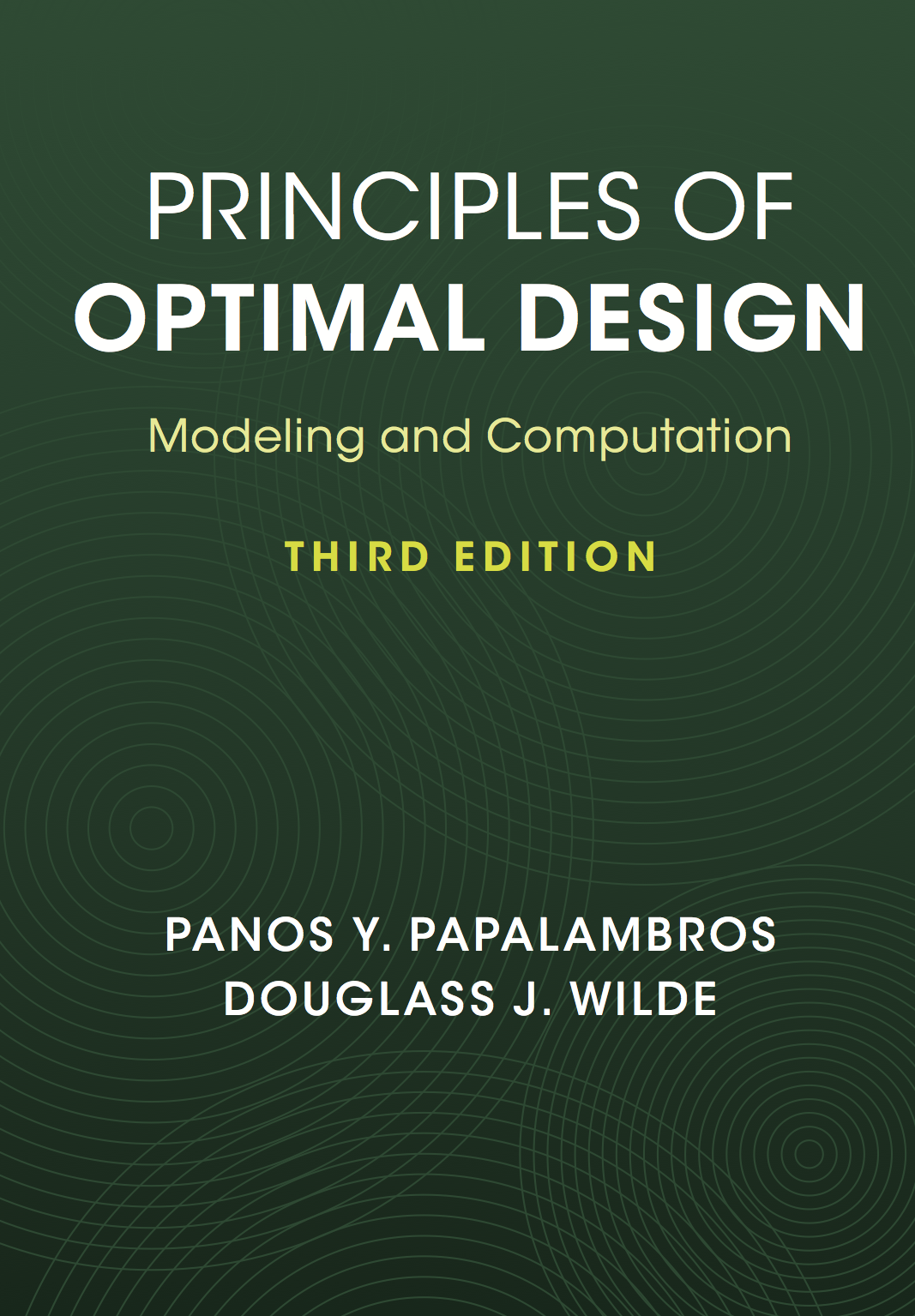From the author:
The book was conceived and written in the mid 1980s to highlight the interplay between the mathematical modeling of design as a decision-making problem and the computational algorithms that will allow the practitioner to solve these problems successfully. Since then, design optimization has become ubiquitous in industry. New classes of algorithms have been developed. Problem complexity has increased and system design has become more critical. Excellent software tools are widely available and take away a lot of the labor. I wanted the new edition to capture these developments and hopefully to maintain its value to the design practitioner. Moreover, I wanted to show that the original motivation for the book is still valid today just as much as it was thirty odd years ago.
Who is the primary audience for this book?
Mathematical design optimization is a natural tool for practicing design engineers who work extensively with simulation-based design software. The mathematical nature of optimization is sometimes a deterrent and I tried to lower the burden and focus on developing a way of thinking. Advanced seniors and graduate students in engineering who plan to work in advanced product and process development are the obvious immediate audience.
What are the market needs/key challenges this audience faces?
The math content can be daunting at first sight. However, if you persist a bit, you find that what you really need is very basic calculus and linear algebra at the freshman or sophomore levels in engineering schools. Actually, once you accept the math need, you realize that those old abstract concepts are practical tools that give you lots of insights. Some of the newer modeling and nongradient methods require more advanced statistics than most people in that group will likely know. But if you miss some of the details, you will still get the thinking behind the methods and will be wiser in using them.
Does the book solve this need/challenge? How?
When practical, we have included simple examples to illustrate each math idea and interpret it in a design context. Sometimes you have to write your own code to “get it” and I have included some suggestions, as students are increasingly facile with coding. The exercises are also meant to help hone this understanding. The last chapter on “Principles and Practice” takes a longer view of how all this math will work in practice —or not work! We also have there a detailed checklist containing all the steps you should take throughout a design optimization project, from setting up the problem to interpreting the numerical output of algorithms.
What unique features do you think make the book stand out in the market?
It’s just the key idea that the problem model and the solution strategy in design optimization are intricately coupled. Each informs the other and leads you to success — or controlled failure so you can try again. The other key point is to honor the math needed but keep it at the lowest level possible. Finally, I hope the price is low enough to make it stand out – following an understanding with Cambridge University Press dating to the first edition.
What You Get in Each Chapter
The chapters have a common general structure and study philosophy. They contain the following elements:
- Introduction and motivation for the chapter and its links with previous and future chapters.
- New concepts and theory are introduced with a motivation as to why we need them. Often, an example will be used to illustrate the need for the new material that follows.
- New terms and symbols are always defined the first time they are used, and also included in a nomenclature table and a list of subjects for the entire book.
- Each concept, theorem or algorithm is followed by one or more examples that can be worked out almost “by hand,” therefore easily replicated.
- A Summary section links the contents of each chapter with the other chapters in the book
- A Notes section is included in each chapter to give some background history on the topics discussed and fairly extensive bibliography with suggestions for further reading.
- Each chapter ends with a set of exercises designed to practice the concepts of the chapter, solve example problems, and extend some of the results. The solutions manual is available to instructors.
About The Authors
Douglass J. Wilde
Stanford University, California
Optimization, computational geometry, team building
Douglass J. Wilde is Professor Emeritus of Mechanical Engineering at Stanford University, California. Originally a chemical engineer and operations researcher, he later conducted research in design optimization and computational geometry. On retirement he began exploring student team building in design contests. In addition to previous editions of Principles of Optimal Design, he has authored or co-authored the books Optimum Seeking Methods (1964), Foundations of Optimization (1967), Optimization and Design (1973), Globally Optimal Design (1978), and more recently Teamology (2009) and Jung’s Personality Theory Quantified (2011).
